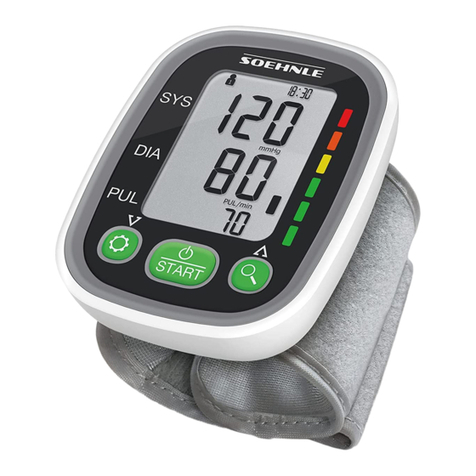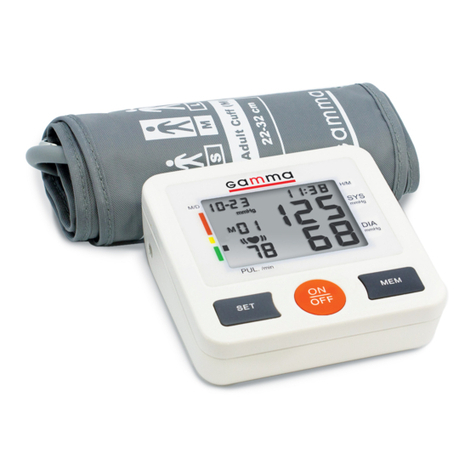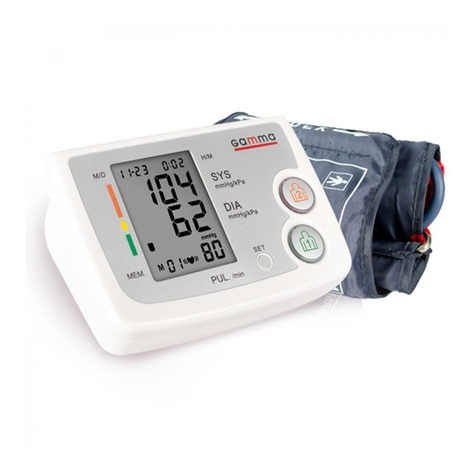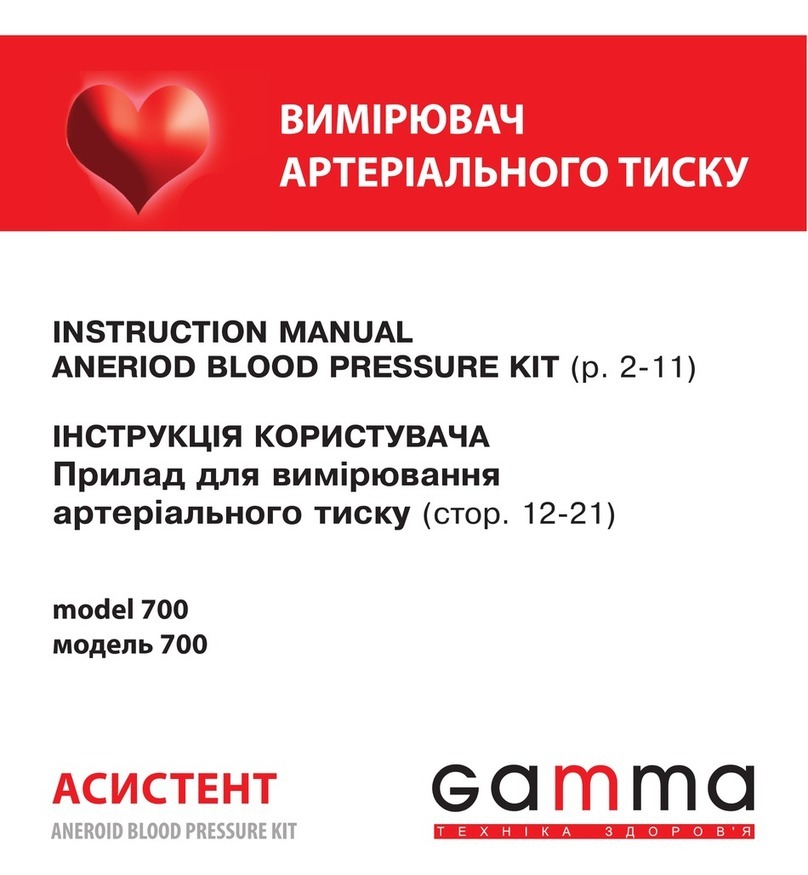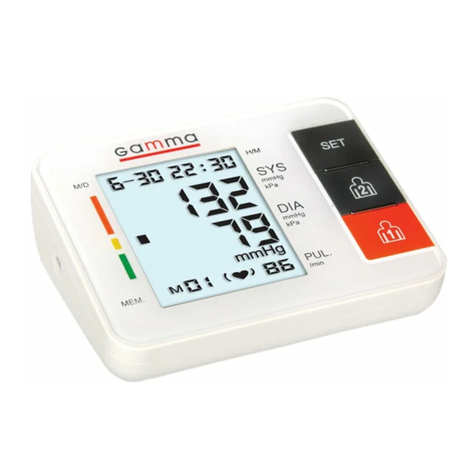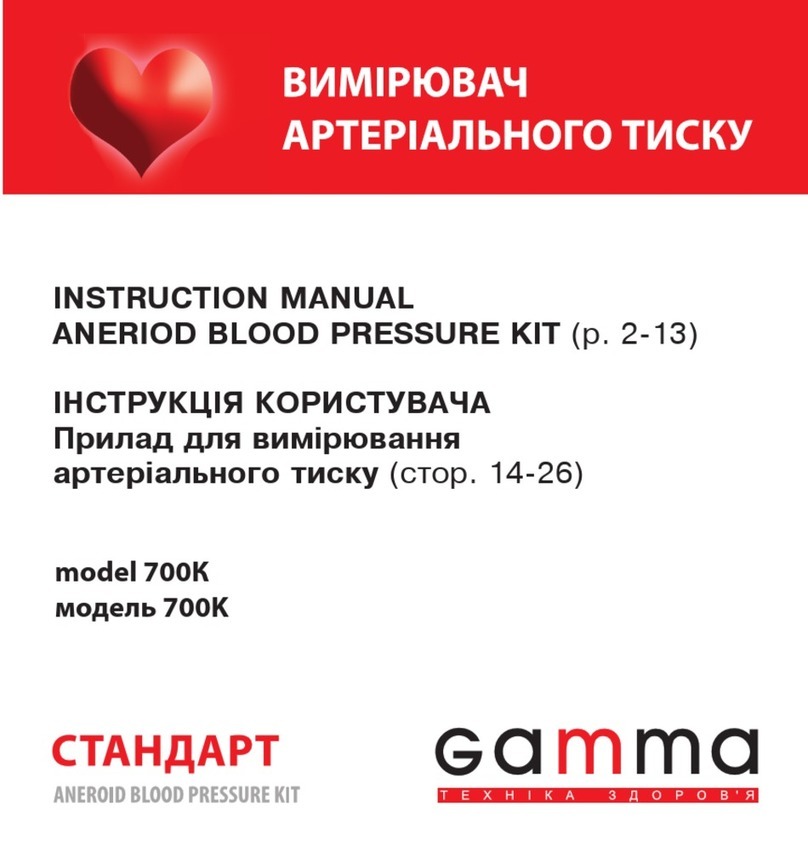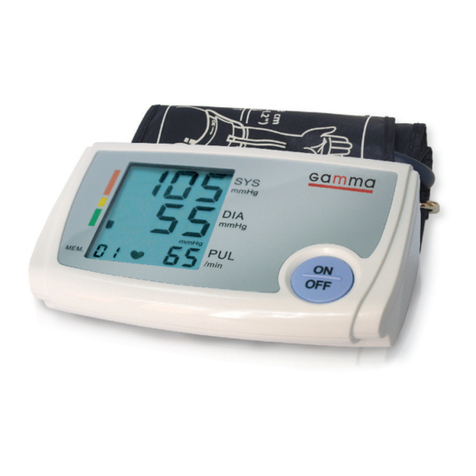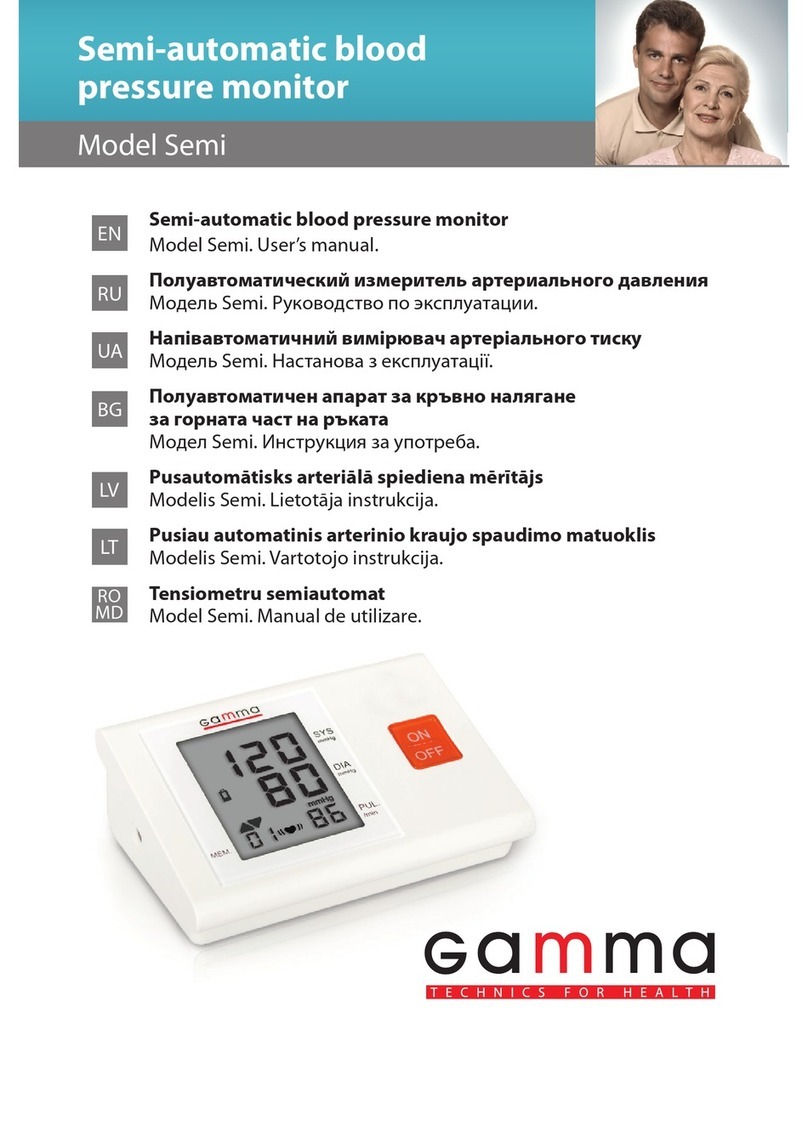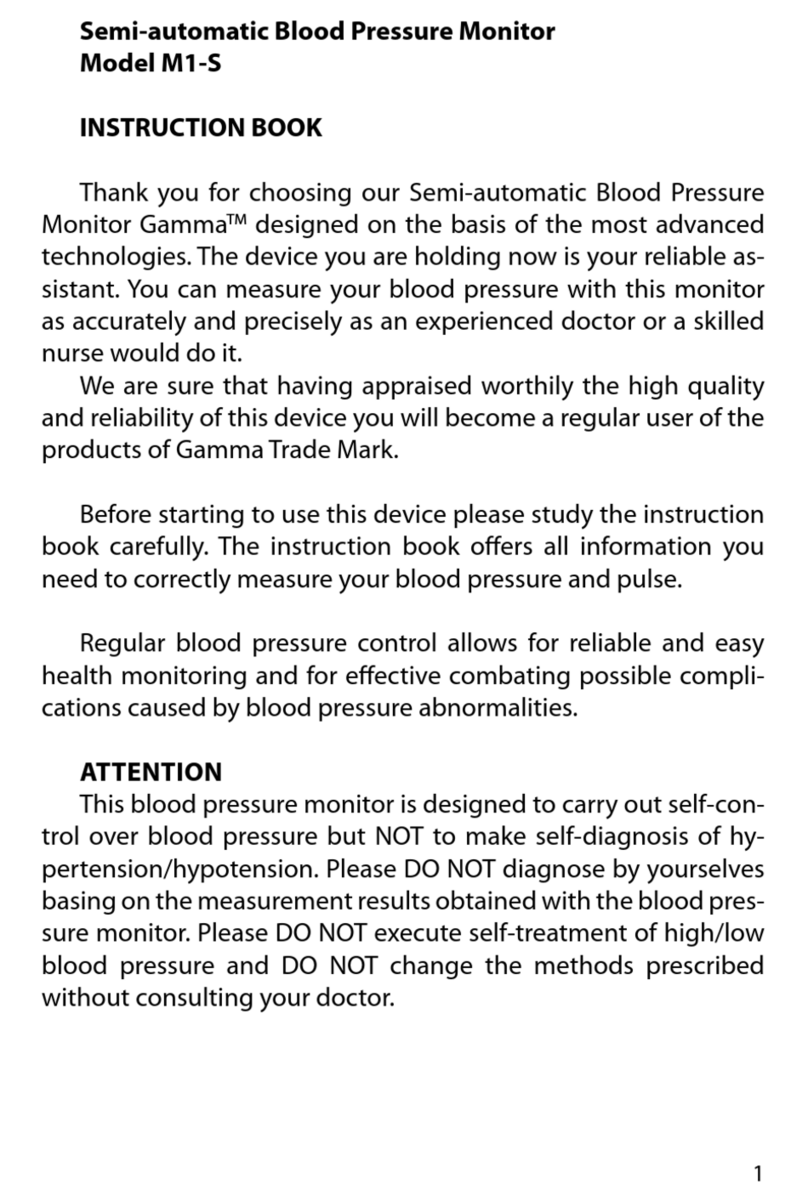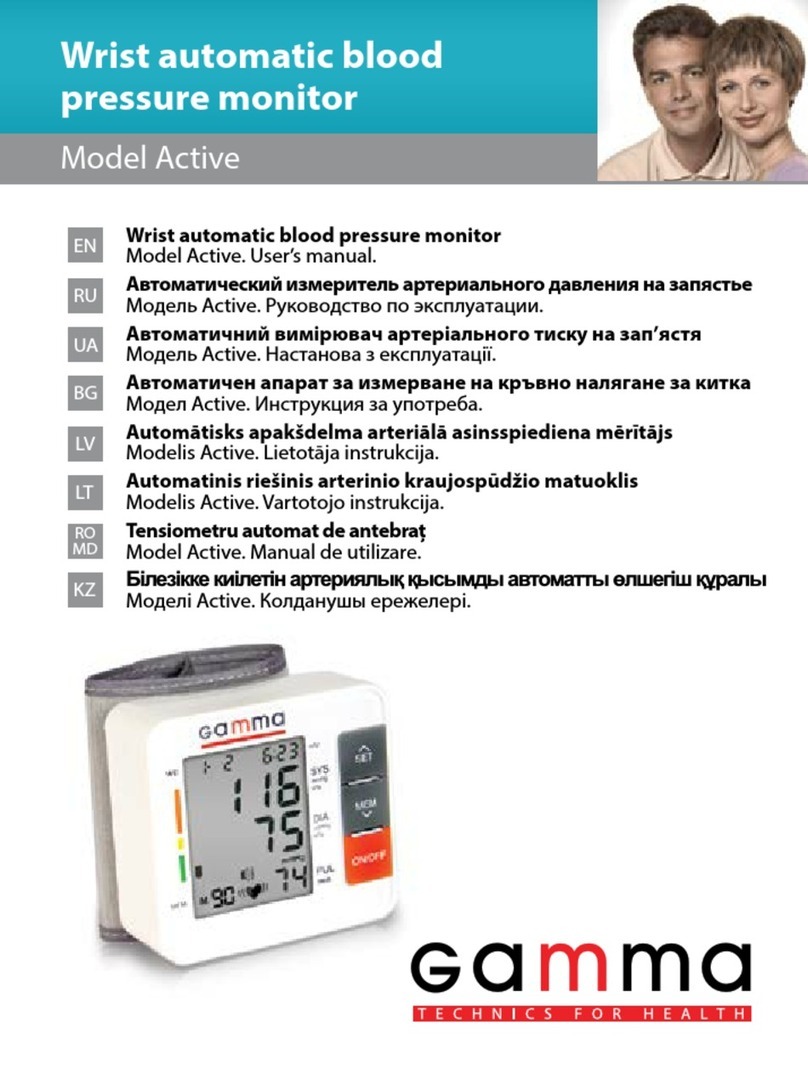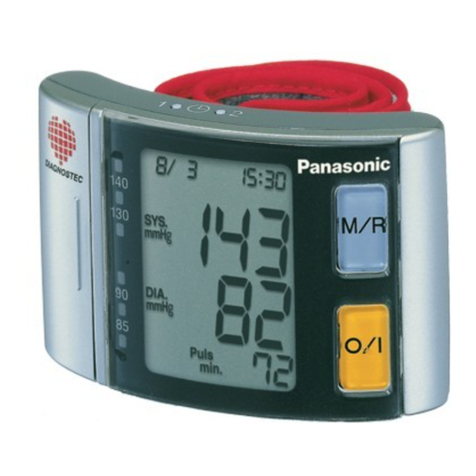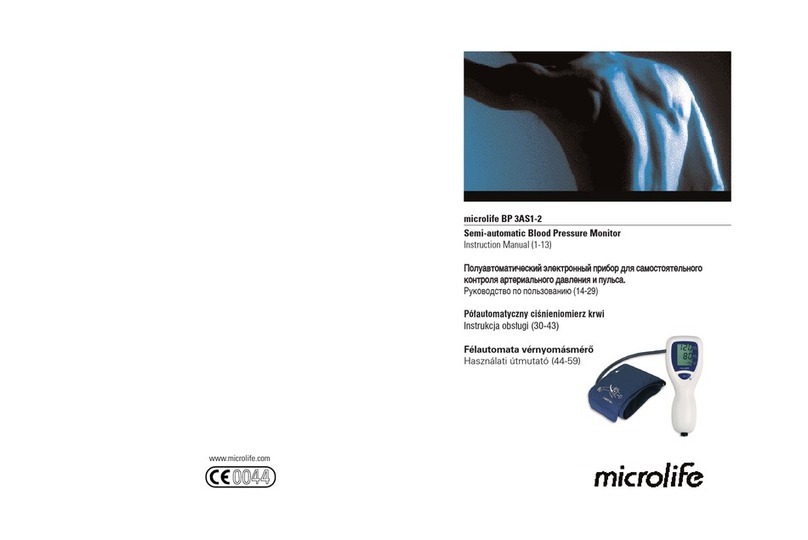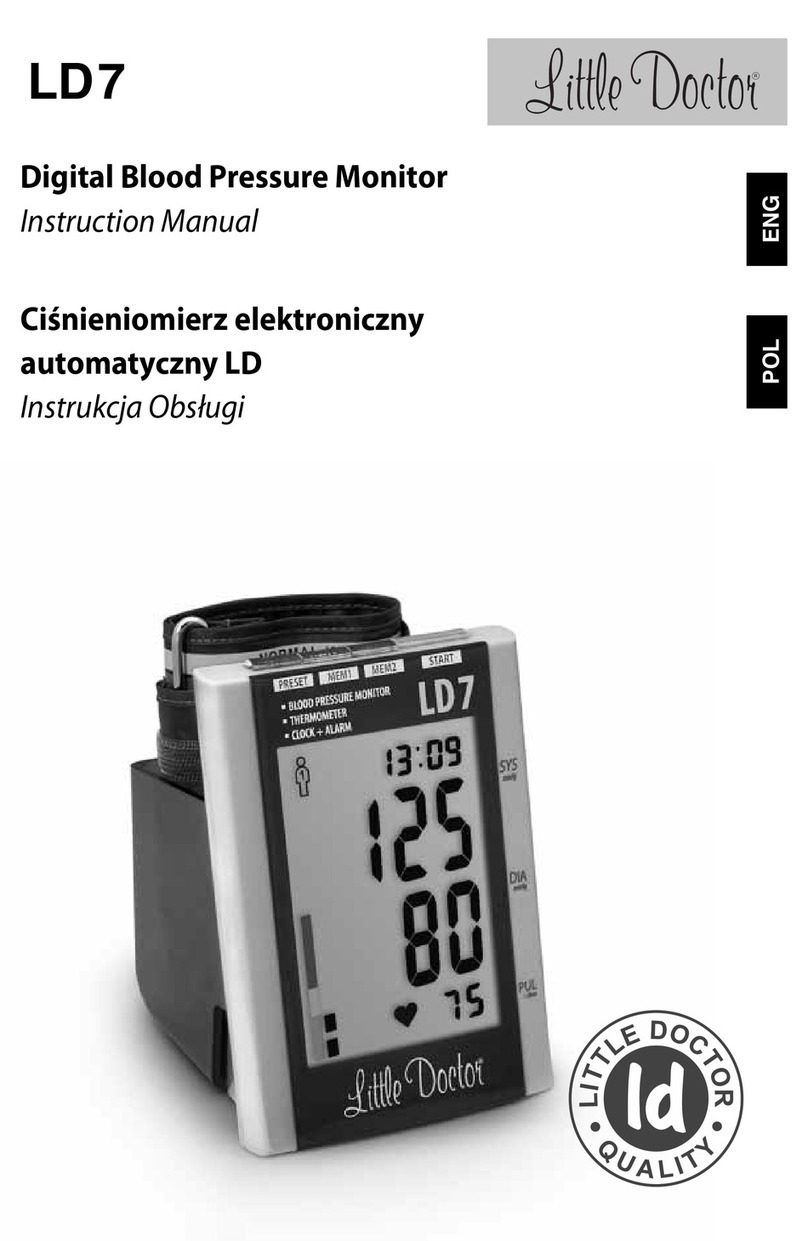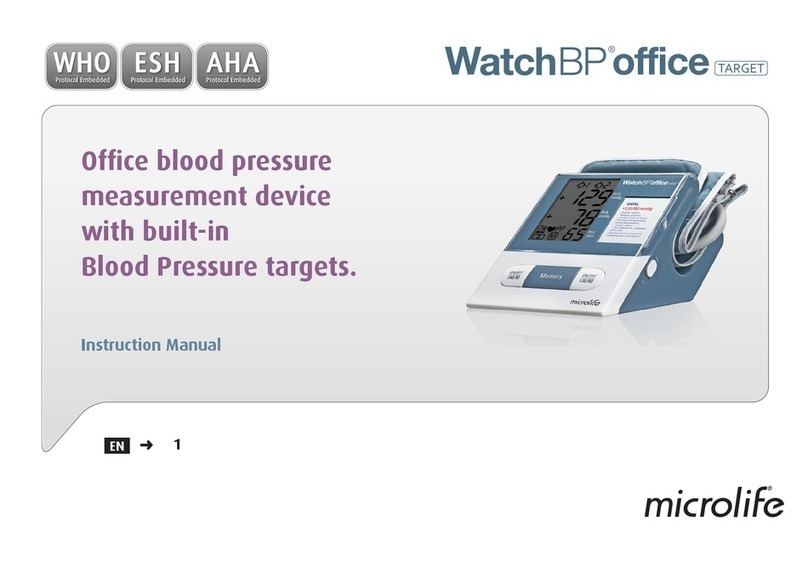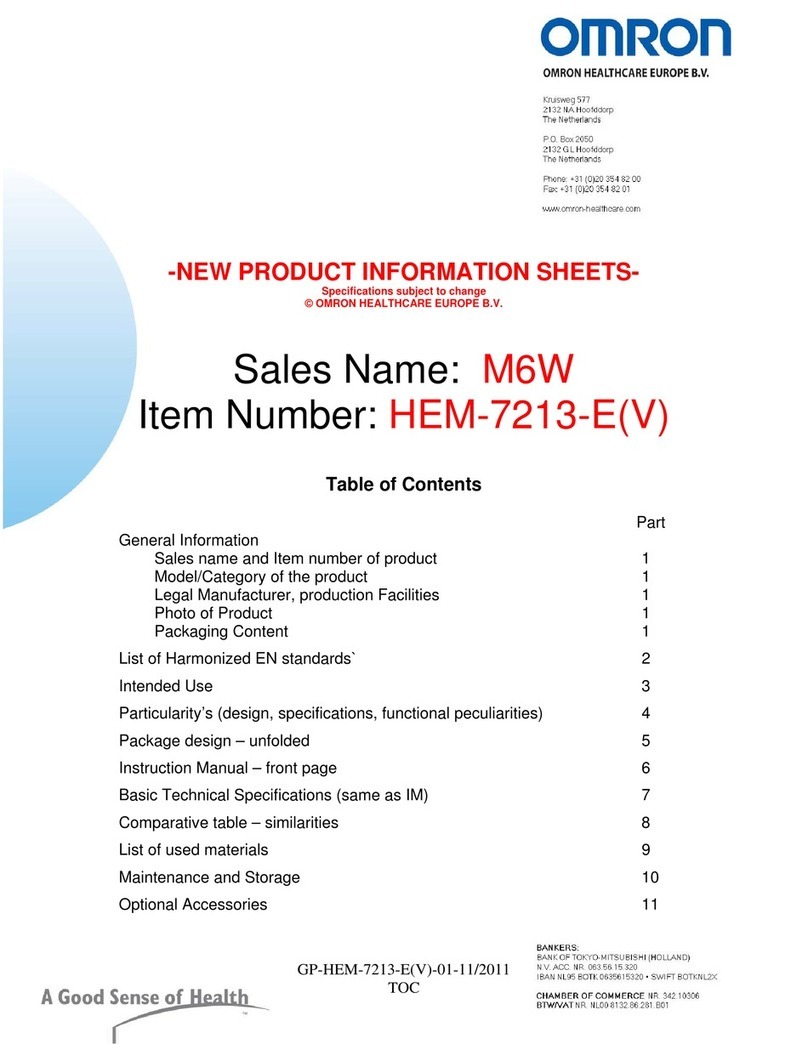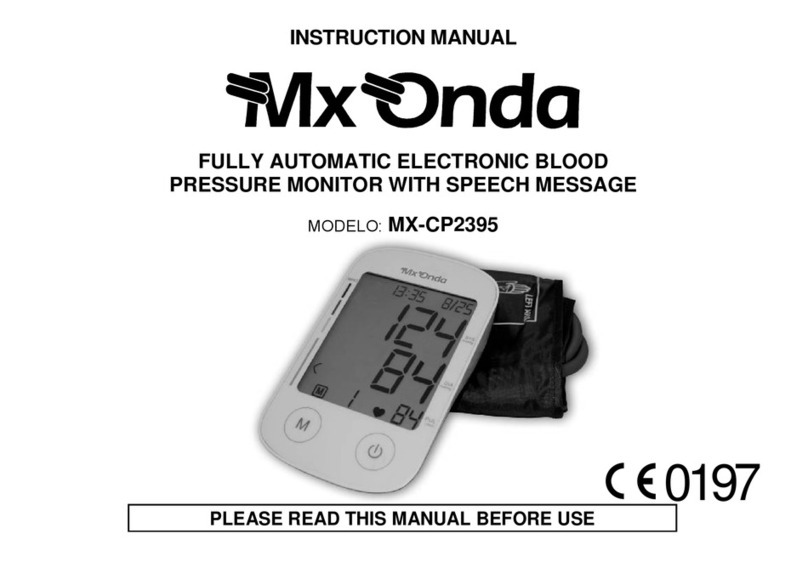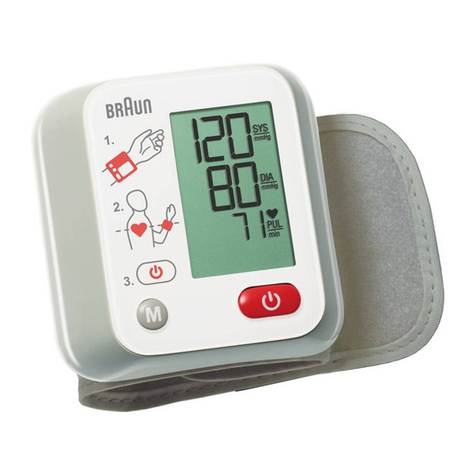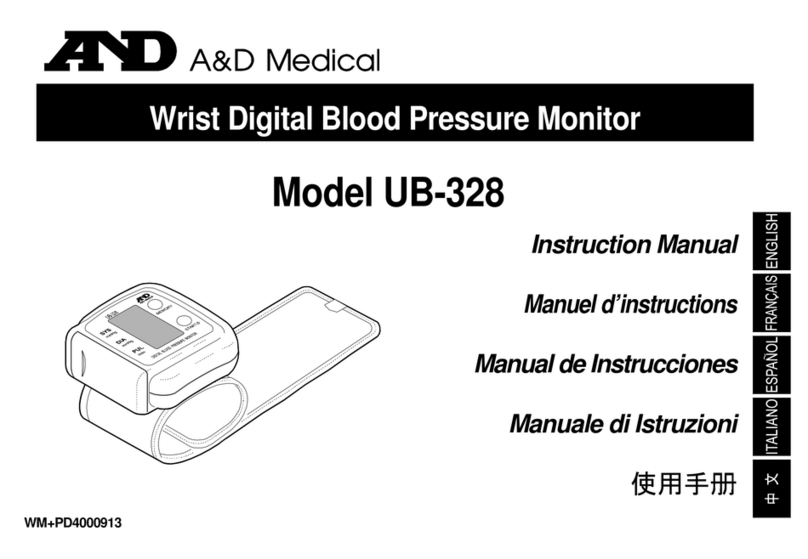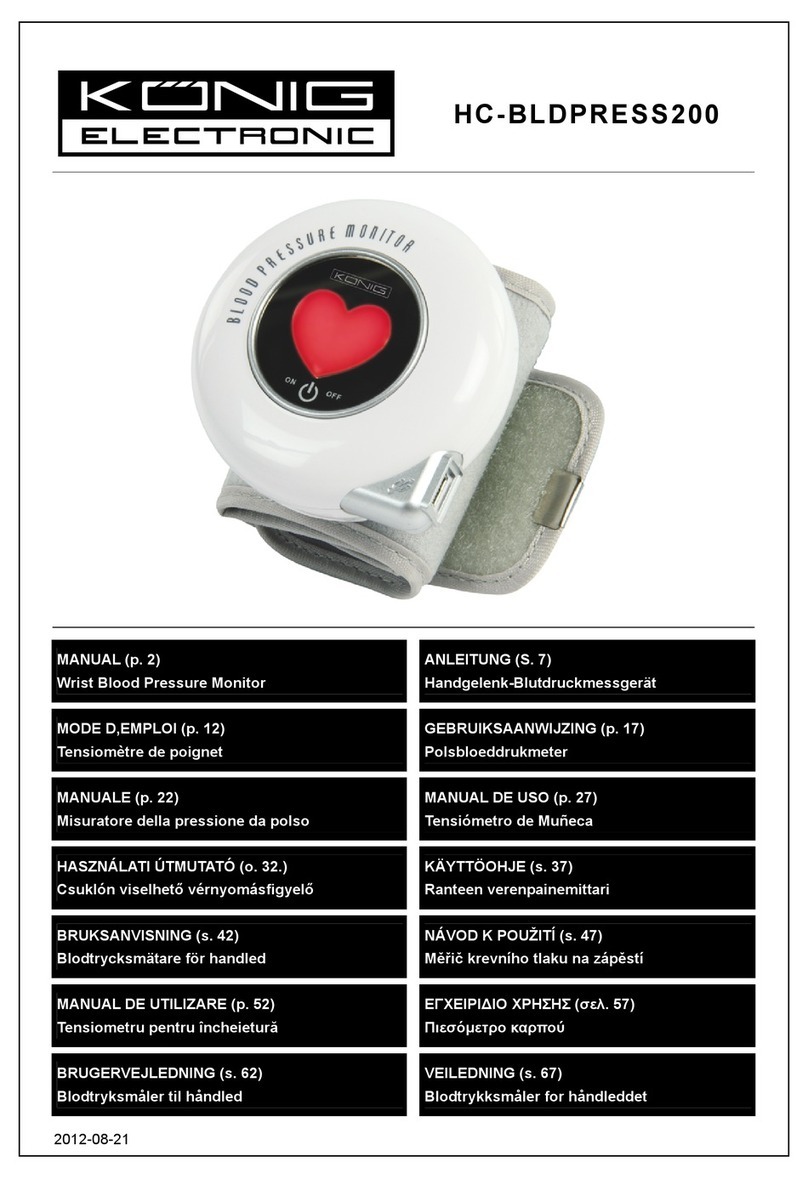
10
remaining air. Record your measurement in the record chart. You
should record reading early, (not to forget values). Remove the
stethoscope from your ears. Remove the cuff.
NOTE: If you want to take another reading, you can reinate up to
twice. Wait at least 5 minutes before measuring again, to avoid inac-
curate readings due to the engorged blood vessels.
QUICK REFERENCE GUIDE
BEFORE
1. MEASURE your blood pressure at the SAME TIME each day.
2. RELAX for at least 5 minutes before taking a measurement.
3. Remove tight tting clothing from your upper arm.
4. DO NOT eat, smoke or exercise for at least 30 minutes before
taking a measurement.
DURING
1. PLACE CUFF at the heart level.
2. STETHOSCOPE CHESTPIECE covers the BRACHIAL
ARTERY.
3. INFLATE unit to proper level (30-40 mmHg above estimated
systolic pressure).
4. DO NOT talk or move during a measurement.
5. DEFLATE unit at 2-4 mmHg per second.
AFTER
1. WAIT 5 minutes before taking another measurement.


